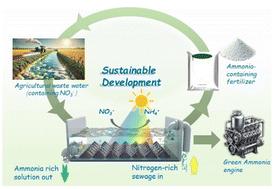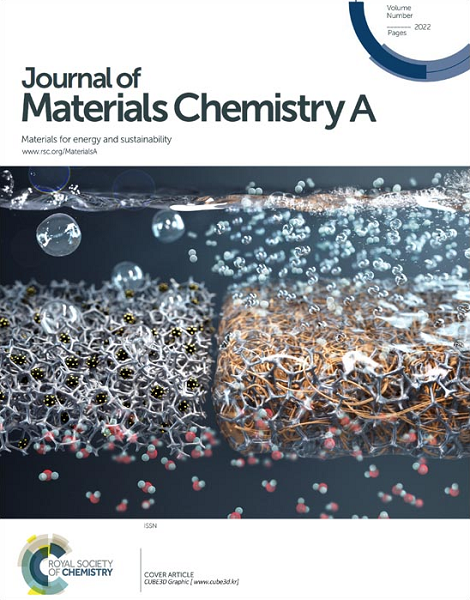Bias-free Si-based photocathode for efficient photoelectrochemical ammonia synthesis and HMF oxidation
IF 10.7
2区 材料科学
Q1 CHEMISTRY, PHYSICAL
引用次数: 0
Abstract
The photoelectrochemical nitrate reduction reaction (NOxRR) has emerged as a promising route for achieving an eco-friendly solar-to-ammonia conversion process. Despite its potential, the approach has been hindered by poor stability and the requirement of an external bias voltage for the coupled NOxRR and oxygen evolution reaction (OER). In this study, an oxygen vacancy (VO)-rich TiO2 catalyst was synthesized and conformally deposited onto a silicon photocathode using the simple yet effective atomic layer deposition (ALD) technique. The resulting Si–TiO2 photocathode exhibited promising NOxRR performance, achieving a faradaic efficiency exceeding 89% at 0 V vs. RHE, along with a solar-to-ammonia productivity (SAP) of 15 μmol h−1 cm−2. Additionally, the Si-based photoanode demonstrated commendable stability, maintaining performance for over 44 hours. To further advance the system, a bias-free photoelectrochemical cell was developed, coupling 5-hydroxymethyl furfural oxidation with NOxRR. This configuration yielded a working current density of 1.5 mA cm−2 and an SAP of 3.6 μmol h−1 cm−2, demonstrating the viability of a sustainable, self-powered approach for solar-to-ammonia conversion.

求助全文
约1分钟内获得全文
求助全文
来源期刊

Journal of Materials Chemistry A
CHEMISTRY, PHYSICAL-ENERGY & FUELS
CiteScore
19.50
自引率
5.00%
发文量
1892
审稿时长
1.5 months
期刊介绍:
The Journal of Materials Chemistry A, B & C covers a wide range of high-quality studies in the field of materials chemistry, with each section focusing on specific applications of the materials studied. Journal of Materials Chemistry A emphasizes applications in energy and sustainability, including topics such as artificial photosynthesis, batteries, and fuel cells. Journal of Materials Chemistry B focuses on applications in biology and medicine, while Journal of Materials Chemistry C covers applications in optical, magnetic, and electronic devices. Example topic areas within the scope of Journal of Materials Chemistry A include catalysis, green/sustainable materials, sensors, and water treatment, among others.
 求助内容:
求助内容: 应助结果提醒方式:
应助结果提醒方式:


